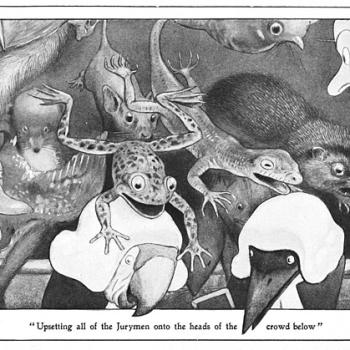There were many signs predicting the McDonaldization of Sex. The first came generations ago. A 1931 editorial in the Washington Post, commenting on the Lambeth Conference of the Episcopal Church, which led to the acceptance of contraception among U.S. Protestants, predicted the social change that would come:
Carried to its logical conclusion, the committee's report if carried into effect would sound the death-knell of marriage as a holy institution, by establishing degrading practices which would encourage indiscriminate immorality. The suggestion that the use of legalized contraceptives would be "careful and restrained" is preposterous.
Though its language is quaint, that editorial was prescient. Today we are faced with a number of paradoxes in the contraceptive age:
- There has been a nineteen-fold increase in the number of out-of-wedlock births in the United States between 1940 and 2007, according to the Centers for Disease Control. And while there is greater tolerance and support for single parenthood, still, according to the CDC, "Nonmarital births are at higher risk of having adverse birth outcomes such as low birthweight, preterm birth, and infant mortality than are children born to married women. Children born to single mothers typically have more limited social and financial resources." Of course, the social burden of these truths falls most heavily on poor women.
- The prevalence of sexually transmitted infections has dramatically increased in the contraceptive era. Prevalence of HIV in the United States increased from roughly 200,000 cases in 1980 to over a million in 2003. While rates of gonorrhea declined, rates of chlamydia and syphilis continued to increase (by 24% and 36% respectively) from 2006 to 2010. Other types of STIs have shown similarly dramatic increases over recent decades. Those hardest hit are women, particularly women of color. The impact is particularly strong on young people: a CDC report showed that nearly half of the 19 million new STDs each year are among young people aged 15-24 years. But the epidemic has hit older adults as well: a UK study showed a doubling of the rates of STI's among older adults (over 45) from 1996 to 2003, a study which the authors said revealed more sexual risk-taking—and this among a population which is more likely to make sexual decisions with greater forethought than teenagers.
- Even in an age when sex is putatively more available because of reduced fears about pregnancy and infection, sex trafficking is a reality, however little understood.
- The divorce rate in the U.S. has remained relatively steady at about half of all marriages over the past three decades, but the rate of those attempting marriage has declined over that same period. It seems that fewer people believe a lifelong sexual friendship in marriage is possible or even worth attempting.
- Americans are more lonely than ever. Even with more widespread access to sex, our ability to relate to one another appears to be deteriorating.
Second, we have colluded in making women's bodies an enemy to be overcome rather than a gift to be cherished. An early ad for the first birth control pill expressed this negative attitude toward a woman's body in striking terms:





